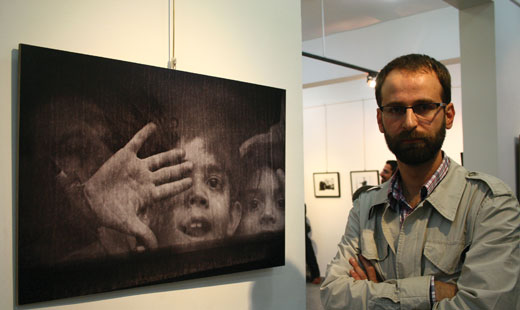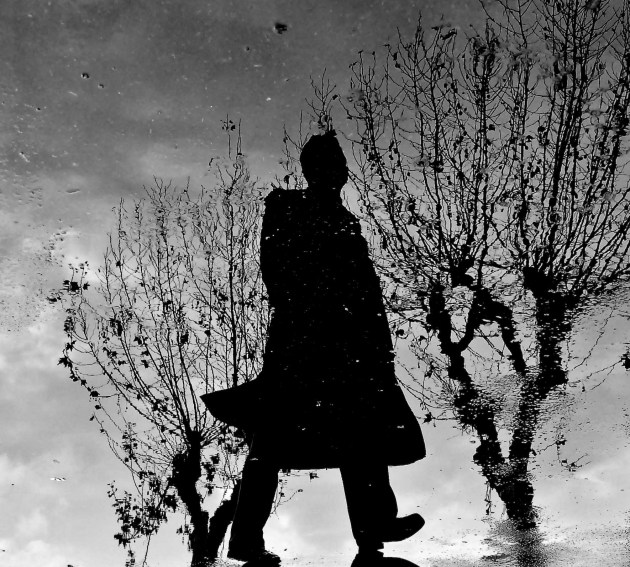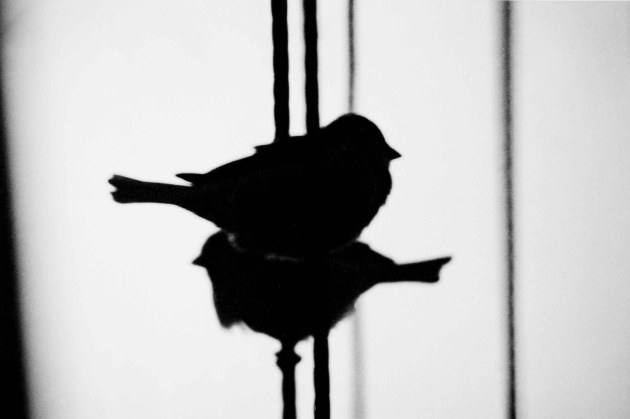Growing up in a family of doctors, Buthayna Ali’s household couldn’t have possibly been further removed from the arts. I discuss with the Syrian-born artist in Damascus how societal, religious and gender-related taboos fuel Ali’s oeuvre.

Buthayna Ali at her exhibtion We. 2006. 330 rubber swings, rope, sand, sound and light. Total size: 600 square metres.
Since the first time she attended an art exhibition as a tiddler, Buthayna Ali knew she wanted to become an artist. As a child, she would organise weekly in-house exhibitions for her family and showcase portraits of them, landscapes and sketches of her surroundings. Although her father expected her to study medicine, Ali applied to Damascus University’s Faculty of Fine Arts (where she now teaches painting) and later completed a diploma in painting from the Ecole Nationale Supérieure des Beaux-arts and a Master’s degree in Islamic Art History at the Paris IV Sorbonne University.
As a multimedia artist, Ali is not only the odd one out in her family, but also within the Syrian art scene that is still largely dominated by classical art forms. Even though Ali admires the works of artists like Michelangelo, Manet and Schiele, the modernist art tendencies of artists like Duchamp in the early 20th century left the biggest impact on her. “The freedom in art in the 20th century helped me break many boundaries. Art for me is about freedom,” Ali says.
I can’t decide which is more provocative in conservative Damascene circles – the art forms that Ali pursues or her eagerness to break the taboos of sex and religion in her work. One thing is certain: Ali’s work never fails to raise eyebrows in her native Syria. When asked what her thoughts are on addressing ‘square issues’, Ali shrugs. “Art is meant to break traditions. It is important to free your tools and open your mind to new ways of expression,” she says, acknowledging acceptance of the fact that conventional spheres in Syria may not appreciate her work. “The first time I saw an installation as an art student in France, I thought it was crap. You don’t wake up one day and start to like video or installation art,” she adds; “To appreciate these art forms, you first need to understand the process that led to their creation and this does not happen between one day and another.”
Breaking Taboos
Even outside Syria, Ali’s work causes controversy. Her installation, No Comment, features copies of the Qur’an, Bible and Tanakh chained inside a glass display case with audio recordings of Islamic verses, Assyrian hymns and Jewish songs. It was denied entry into Jerusalem for participation in the 2009 exhibition, The Other Shadow of the City, curated by Samar Martha at Al-Hoash Gallery. Through the work, Ali criticises religious hypocrisy and implies that the teachings of the three religions are no longer followed, but are instead used for political propaganda. Ali did not receive an official explanation as to why the work was rejected. The work, which was never exhibited, didn’t make it back to Damascus and was ruined on the way.
“I made this artwork especially for The Other Shadow of the City exhibition and I chose this subject because Jerusalem for me is about these three religions and their fight to gain control over the city,” Ali said. “I was very disappointed that the art work was not allowed into Jerusalem. I’ve always dreamed about visiting Jerusalem and I was so excited that my work could be exhibited there.”
Her easygoing and informal persona allows her to stroll along the streets of Damascus to convince ordinary Syrians – from the local butcher to the veiled woman walking down Souk Al-Hamidiyeh – to talk to Ali openly about their views on sex, life and the concept of homeland. In her installation, Marionettes, Ali probed men and women from different cultural and religious backgrounds on Syria’s curious lingerie production which includes edible undergarments and remote-controlled bras that play music and spring open with a press of a button. The inspiration for this work came from seeing kitschy lingerie spread out on a peddler’s small table next to the Sayyida Ruqayya shrine in Old Damascus. “I found it very contradictory that it is a taboo to talk about sex, yet it is perfectly normal to sell lingerie in front of places of worship and to have women, mostly veiled ones, go into the Syrian equivalent of sex shops where men sell them lewd lingerie!” exclaims Ali.
The piece, exhibited in Point Ephémère in Paris in 2007, features eight lingerie items hung by strings, like marionettes, and which face eight mirrors. Visitors standing in front of the mirrors appear to be wearing the undergarments; a changing room – for anyone wishing to try on the lingerie – plays audio files of conversations between Ali and interviewed men and women who had been asked their opinions on the lingerie and whether they would purchase any of the items. To Ali’s surprise, most of the Syrian men she interviewed said they didn’t like them, while the majority of the women said that they would wear them.
Syria’s provocative lingerie production caught the interest of other artists as well. Designer Rana Salam and writer Malu Halasa published the book The Secret Life of Syrian Lingerie in which various Syrian women voiced their fears, hopes and view of sex and marriage. In Marionettes, Ali decided to go a step further by making visitors of her exhibition, even if only virtually, wear that lingerie and thus see the subject from a more personal point of view.
“The work is about the viewers rather than the exhibited lingerie. I wanted to challenge the visitors and dare them to wear those lewd pieces,” Ali says pointing out that interaction with the audience is why she chose to make installations instead of paintings. “A boundary always exists between the viewer and a painting, and it takes a long time to overcome it. Installations, on the other hand, involve all the senses of the viewer making the artwork easier to grasp and more intimate. This also makes it more colourful. Monet painted the Cathedral in each period of the day to show it, each time, in a different light. My installations change with every visitor; each one of them make it appear in a different light.”
Issues of Displacement
During the interview, roles were often reversed and Ali was the one asking the questions – something akin to the second nature of a restless artist. “In Arab countries we take many things as a given. There are a lot of things that you don’t question because you are not supposed to,” she says. “I didn’t choose my name, my sex, my country of origin or the religion I was born into. There are a few things left where I can have a choice, so why not? Asking questions gives me choices.” Her constant travel between Europe, Syria and Canada for study and work allowed her to question the concept of home, especially when meeting second-generation immigrants who consider their parents’ country of origin as their homeland even though some had never lived there and don’t speak its language. “Can you inherit a homeland?” Ali asks. “I don’t understand how it can be that you grow up and spend your whole life in a certain country and yet feel that you belong to another one that you’ve hardly visited!” Inspired by the immigrants and their sense of dislocation, Ali created the photomontage, Examples, in which she asked immigrants in various countries where it is that they call home. Exhibited in 2008 at Paris’s Enrico Navarra Gallery, the work features interviews and portraits of Ali’s ‘examples’ created in a book format, but hung. Like bookends, each person’s face and the back of their heads framed the contents within, thus inviting viewers to read what is essentially, within these ‘minds’. The conversation then begs the question: where does Ali call home? Unflinchingly and in a heavy Damascene accent, she quickly says, “Al-Sham (Damascus) is my home. I don’t see homeland as a political unit though. Less than 100 years ago, the Syria we know today did not exist. My homeland is where I grew up and where my childhood memories are.”
Dislocation is also a central theme in Ali’s installation, Y, which was commissioned and later purchased by Mathaf Arab Museum of Modern Art. The artwork is comprised of 22 slingshots which symbolise the 22 Arab countries that according to Ali, “catapult their citizens”, or, in other words, force them to immigrate and seek asylum for various political, economical and social reasons. Using cement, Ali sized each slingshot according to the size of the Arab country it represents and reflected its migration rate during the last decade in the length of its rubber straps. Why slingshots, I ask? “Because they involve a short period of flying. They give a sense of freedom. This initial freedom, however, is short-lived. They will soon hit the ground with a brutal jolt,” replies Ali, referring to the emotional impact of being uprooted.
Calling for Equality
Ali insists that she is not a feminist. However, the Syrian tradition of deeming trivial or casual conversations ‘women’s talk’ and the fact that two women’s testimonies equal a man’s in Syrian courts provoked the title of one her most recent works, Don’t Talk to Her, She’s Only a Woman! that was exhibited at Tütün Deposu in Istanbul in 2010 as part of the Sharing Waters sauna meets hammam project curated by Ulla Kastrup. In the piece, Ali explores the hammam as a refuge for women away from the sphere of male influence and authority; a place where they can spend “me-time” and share their secrets and concerns mostly concerning the opposite sex. Ali’s belief of women being unequal to men is not restricted to Syrian society – the work includes a Japanese woman’s recitation of discrimination in her workplace because of her gender; an Iraqi refugee’s tales on being a prostitute in Syria and an American woman’s criticisms on society for frowning upon her having four or five sexual partners. “I see the hammam as a place where women peel off their clothes and restraints and enjoy a short period of freedom and gather strength to face their lives in a patriarchal society,” adds Ali. “It was very hard to convince women to open up and tell me the stories that they would otherwise confide in their close friends in a hammam.” Getting these women to talk was not the only challenge – Ali’s subjects opted to record their voices on tape for sake of privacy as opposed to speaking with her face-to-face. This element of ‘secrecy’ and indistinctness was reflected in Don’t Talk to Her, She’s Only a Woman! via two standard metal lockers fitted with 15 closed tier boxes in each. Light and recordings of each woman’s narrative spill out from the sealed boxes. Yet, when viewers open a locker, the light goes off and the sound is muted.
Light forms an integral part of Ali’s works. Since her first show, an installation of a tent which was also her graduation project at the Ecole Nationale Supérieure des Beaux-arts, was criticized by the jury for not using light, Ali put a lot of effort in this aspect of her work.
“I felt that by not using light I let my work down. Light in an installation is just as important as colour is in a painting,” Ali said.
Ali’s most recent exhibition took place last November in Venice in the Fondazione Prada’s new exhibition space, the Ca’ Corner della Regina, where she showcased her work Y. Since then, however, the artist has not made any new artworks. The anti-regime demonstrations which began in Syria in March 2011 and rising death toll have had a profound impact on her; being so emotionally engrossed in the rebellion has distracted and conceiving other artwork is not a priority she holds at present.
When asked about her future plans, Ali shakes her head. “I used to tell my students at the university that if you stop working for one day, then you are not an artist! Yet here I am, one year after the unrest started in Syria and I am no longer able to work,” Ali says admitting that it is the first time she stopped making art since she was a little kid. “Living inside Syria, I feel like I am inside a box and I can no longer see things clearly. So many people are dying and all I am left with is a deep feeling of shame,” she pauses. “My only plans now are to see the end of the bloodshed in my country.”
This article was published in the current March/April issue of Canvas art magazine. See pdf version here.
















